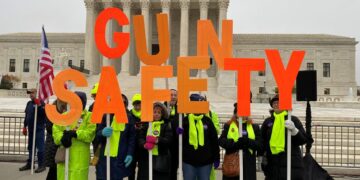Login to Continue Learning
In October 2022, the Supreme Court made it harder for states to limit which individuals may carry guns in public. In response, several Democratic-led states including California, New York, Maryland, and New Jersey imposed new rules. After losing much control over who could publicly carry firearms, these states focused on where people could bring them.
Hawaii’s law now defaults to prohibiting handguns on private property unless a property owner grants explicit permission. Previously, it was generally presumed that lawful weapons could be brought onto private property unless the armed person was told not to have them.
Three gun owners and the Hawaii Firearms Coalition challenged this law, arguing it violates the Supreme Court’s 2022 affirmation of the right to carry arms for self-defense. The Trump administration supported an appeal by these firearms advocates.
The Solicitor General John Sauer wrote that someone carrying a firearm for self-defense should not fear criminal sanctions while running errands. He urged the Supreme Court to take this case.
Lower courts are still grappling with applying recent Supreme Court rulings on guns. For instance, in 2022, when the court struck down New York’s law requiring special needs to carry weapons outside the home, it ruled that gun regulations must be similar to historical weapon regulations to pass constitutional muster.
The San Francisco-based 9th U.S. Circuit Court of Appeals found Hawaii’s rule aligns with this test. However, the New York-based 2nd U.S. Circuit Court of Appeals concluded a similar restriction in New York does not. Both states also ban firearms in “sensitive places,” such as beaches and parks, and restaurants that serve alcohol, which is also being challenged.
This ongoing legal debate highlights the Supreme Court’s continuing effort to define constitutional tests for gun regulations.


















